Hummingbirds are some of the smallest birds in the world. Despite their tiny size, they build nests that are strong, flexible, and well-hidden. These nests are engineering wonders, designed to protect their eggs and chicks.
In this article, we’ll explore how hummingbirds build their nests, what materials they use, where they place them, and how they care for their young.
What Does a Hummingbird Nest Look Like?
Hummingbird nests are tiny, intricate, and marvelously camouflaged structures. Here’s what they typically look like:
- Size: Hummingbird nests are incredibly small, often no bigger than a golf ball and just 1.5 to 2 inches in diameter.
- Shape: The nests are typically round or oval in shape, with a small entrance hole on the side. The entrance hole is just big enough for the mother bird to enter and exit, and it helps to keep predators out.
- Materials: Hummingbirds use soft materials like plant fibers, moss, and spider silk to construct their nests. The spider silk gives the nest elasticity, allowing it to stretch as the chicks grow.
- Camouflage: To blend in with their surroundings, hummingbirds often decorate their nests with bits of lichen, bark, or leaves.
- Location: Nests are usually built on tree branches, shrubs, or even man-made structures, often in a sheltered spot to protect against predators and weather.
How Do Hummingbirds Build Their Nests?
One of the most amazing things about hummingbird nests is the effort that goes into the nests built by these tiny birds. Female hummingbirds are solely responsible for this task, and they are incredibly meticulous.
Step-by-Step Process
- Choosing a Location: The female begins by finding a safe spot, usually on a thin branch or fork of a tree. Some hummingbirds will even choose plants, shrubs, or unconventional spots like hanging decorations or wires.
- Gathering Materials: Once a location is chosen, the female collects materials like moss, feathers, plant down, and spider webs. She often flies back and forth multiple times until she has everything she needs.
- Weaving the Nest: Using her beak and body, the female weaves these materials together into a small, sturdy cup. She uses spider silk to anchor the nest to the branch and to give it flexibility.
- Camouflaging: To keep the nest hidden from predators, the female often decorates the outside with bits of lichen, moss, or bark, blending it into the surroundings.
Duration of Construction
Building a hummingbird nest can take anywhere from 5 to 10 days. Female hummingbirds spend up to seven days building their nests, depending on the availability of materials and environmental conditions. Once the nest is complete, the female lays her eggs (usually 1-3) and begins the incubation process. Some hummingbird species, like Anna’s hummingbird, will build the nest as they incubate their eggs.
Where Do Hummingbirds Build Their Nests?
Hummingbird nesting locations are strategically placed to provide safety and access to resources. Here’s a closer look at their nesting preferences:
Common Nesting Sites
Hummingbirds usually build their nests on trees or shrubs, choosing thin branches that are hard for predators to reach. They often position their nests at heights ranging from 10 to 40 feet, depending on the species and environment. However, nests can be found at heights of 6 to 50 feet above ground, with an average range of 10 to 20 feet.
On the west coast, certain species like the Anna’s Hummingbird are present year-round and exhibit unique nesting habits during the spring.
Unusual Nesting Spots
Sometimes, hummingbirds take a more unconventional approach. They’ve been known to build nests on wires, chain loops, wind chimes, and even outdoor holiday decorations. For instance, a female hummingbird might construct her nest atop a ceramic angel that is part of a wind chime or on the chain that holds a wind chime. These places offer some level of stability and, surprisingly, relative safety from predators.
Proximity to Food and Water
Hummingbirds prefer nesting sites close to food sources like nectar-rich flowers. They also favor spots near water to keep the area cool. This proximity ensures that the female bird doesn’t have to travel far while incubating her eggs or feeding her chicks. Native flowering plants play a crucial role in providing these essential food sources near nesting sites, thereby enhancing the overall appeal of the yard for hummingbirds.
When Do Hummingbirds Nest?
Hummingbirds typically nest during the spring and early summer, but the exact timing varies depending on the species and geographic location.
Nesting Season by Region and Species by Region and Species
In the southern United States, hummingbird nesting often begins as early as March, with some species like Anna’s Hummingbird starting as early as November with the first winter rains.
In cooler northern or mountainous regions, nesting may not start until as late as July.
Many hummingbirds start building nests in April, especially in places like Southern Arizona where multiple species such as Broad-billed, Black-chinned, Costa’s, and Broad-tailed Hummingbirds nest around this time.
Anna’s Hummingbird has a breeding season that runs from December through May or June, with some nesting occurring twice a year.
Generally, hummingbirds in northern parts of the U.S. raise one brood per season, while southern populations may have multiple broods in a year.
Incubation and Fledging
After laying 1 to 3 tiny eggs (usually two), the female incubates them for about 14 to 21 days depending on species and conditions.
Once hatched, chicks remain in the nest for about three weeks before fledging. By this point, they have grown feathers and are strong enough to fly.
The mother continues feeding the fledglings for a few days after they leave the nest boxes.
Do Hummingbirds Reuse Nests?
Hummingbirds typically do not reuse their nests. However, they may return to the same location and build a new nest on top of or near the old one. Their nests are often fragile and made from materials like spider silk, moss, and plant fibers, which can deteriorate over time. Instead of reusing the old nest, they often dismantle it and use some of the materials to construct a new one.
How to Attract Hummingbirds to Your Yard
To attract hummingbirds to your yard, you can create a welcoming environment that meets their needs for food, water, and shelter. Here are some tips:
1. Plant Native Flowers: Choose brightly colored, tubular flowers like salvia, bee balm, trumpet vine, and columbine. These are rich in nectar and naturally attract hummingbirds.
2. Use Feeders: Hang hummingbird feeders filled with a simple sugar-water solution (1 part sugar to 4 parts water). Avoid using red dye, as it can be harmful to the birds.
3. Provide Water: Hummingbirds love shallow water features like misters, drippers, or small fountains where they can bathe and drink.
4. Create Shelter: Plant shrubs, trees, or vines to provide perches and nesting spots. Dense foliage offers protection and a place to rest.
5. Avoid Pesticides: Pesticides can harm hummingbirds and the insects they feed on. Opt for natural pest control methods instead.
6. Add Red Accents: Hummingbirds are drawn to the color red. Incorporate red flowers, feeders, or garden decorations to catch their attention.
7. Keep Feeders Clean: Regularly clean feeders and replace the sugar-water solution every 2-3 days to prevent mold and bacteria growth.
8. Provide Bloom Variety: Plant flowers that bloom at different times of the year to ensure a consistent food source.
By combining these strategies, you can create a hummingbird-friendly haven in your yard!
Final Thoughts
Hummingbird nests may be small, but they are a testament to the ingenuity and hard work of these remarkable birds. Imagine the wonder and intricacy involved in creating such a delicate and intricate nest, a remarkable work of art by such a tiny bird. From their choice of materials to their strategic locations, every detail is carefully considered to ensure the survival of their offspring. By understanding more about hummingbirds and their nesting habits, we can better appreciate these tiny marvels and take steps to protect them. Whether you’re a birdwatcher or just a nature enthusiast, taking the time to observe hummingbirds can be a truly rewarding experience.
Frequently Asked Questions (FAQs)
Where do hummingbirds nest in winter?
Hummingbirds usually migrate to warmer regions during the winter. They don’t build nests during this time but instead focus on finding food to sustain their energy. Most North American hummingbirds migrate to Central and South America for winter, where they stick to areas with abundant flowers and insects.
What are hummingbird nests made of?
Hummingbird nests are tiny and intricately built using soft materials. They are typically made of:
- Plant fibers
- Moss
- Spider webs (which acts as glue and gives flexibility)
These materials help create a sturdy, stretchy structure that can expand as the chicks grow.
What bird builds a hanging nest?
Several birds are known for building hanging nests. One common example is the oriole, which weaves intricate, pouch-like nests that dangle from tree branches. Other birds, such as the weaver bird or vireos, are also expert hanging nest builders. These unique nests are often designed to protect eggs and chicks from predators.
Will Hummingbirds Nest in a Birdhouse
Hummingbirds typically do not nest in birdhouses. Unlike many other bird species, hummingbirds prefer to build their nests in trees or shrubs, often on thin, horizontal branches.

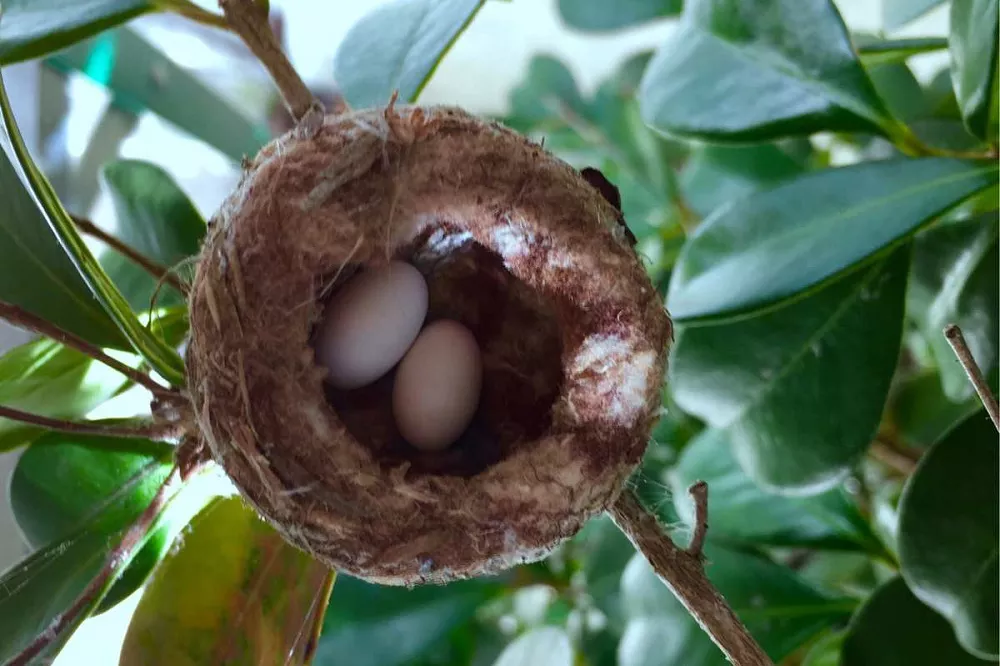
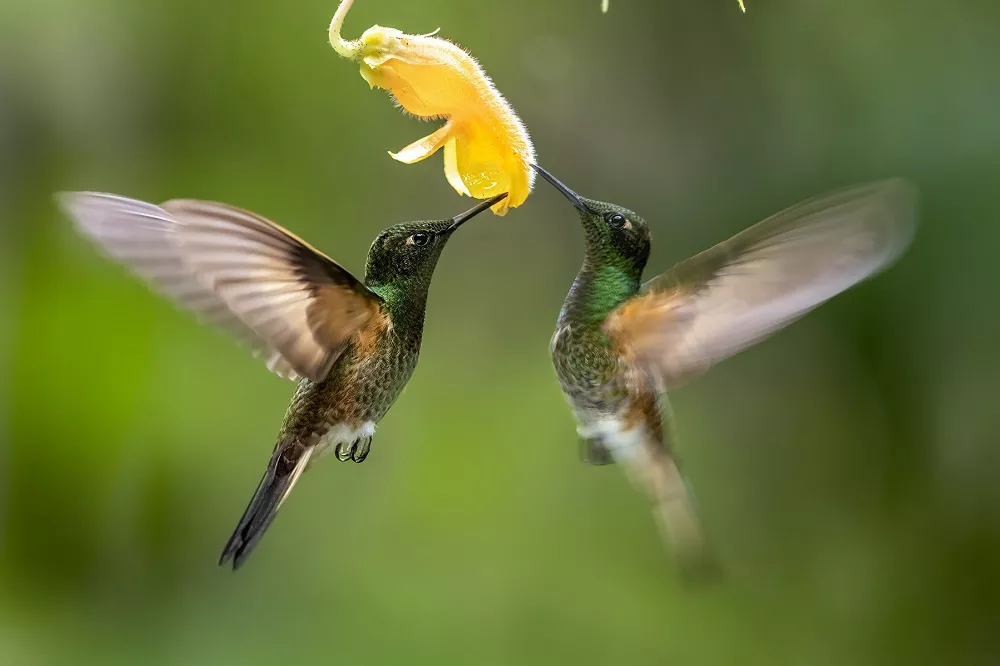
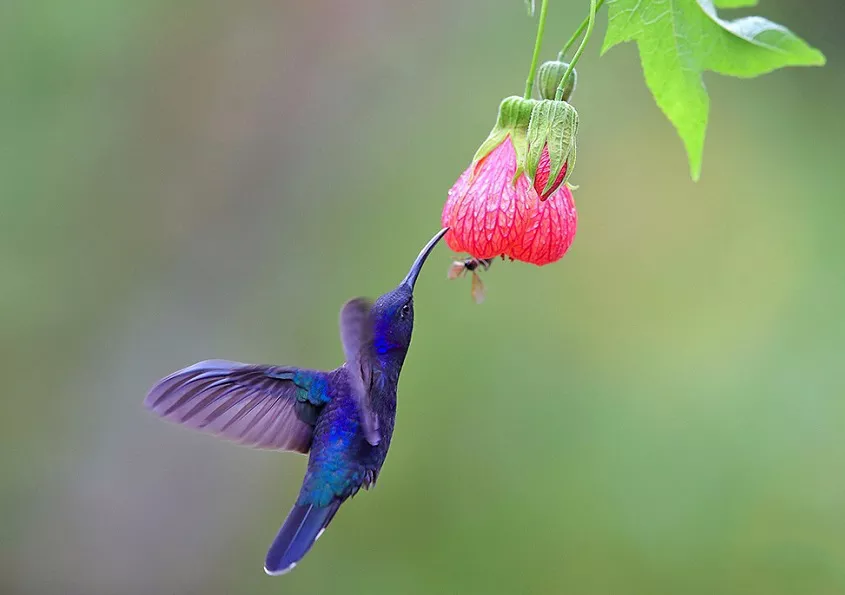
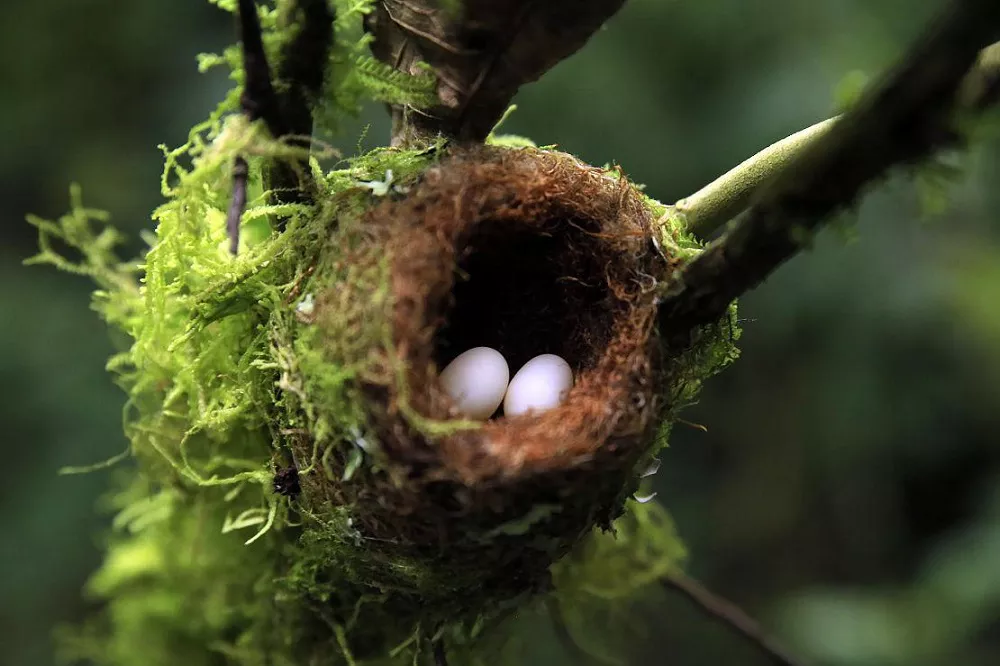
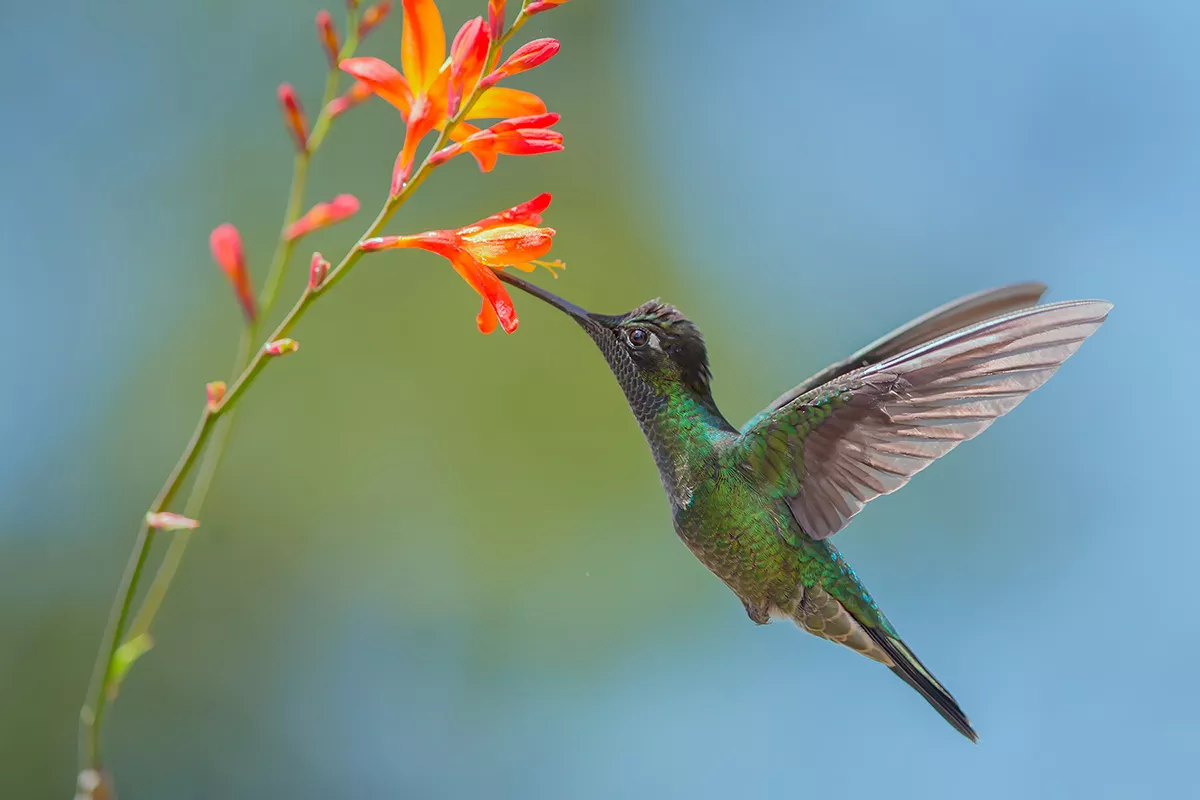
 Facebook
Facebook  Instagram
Instagram  Youtube
Youtube 